Getting Technical: Clarity of purpose
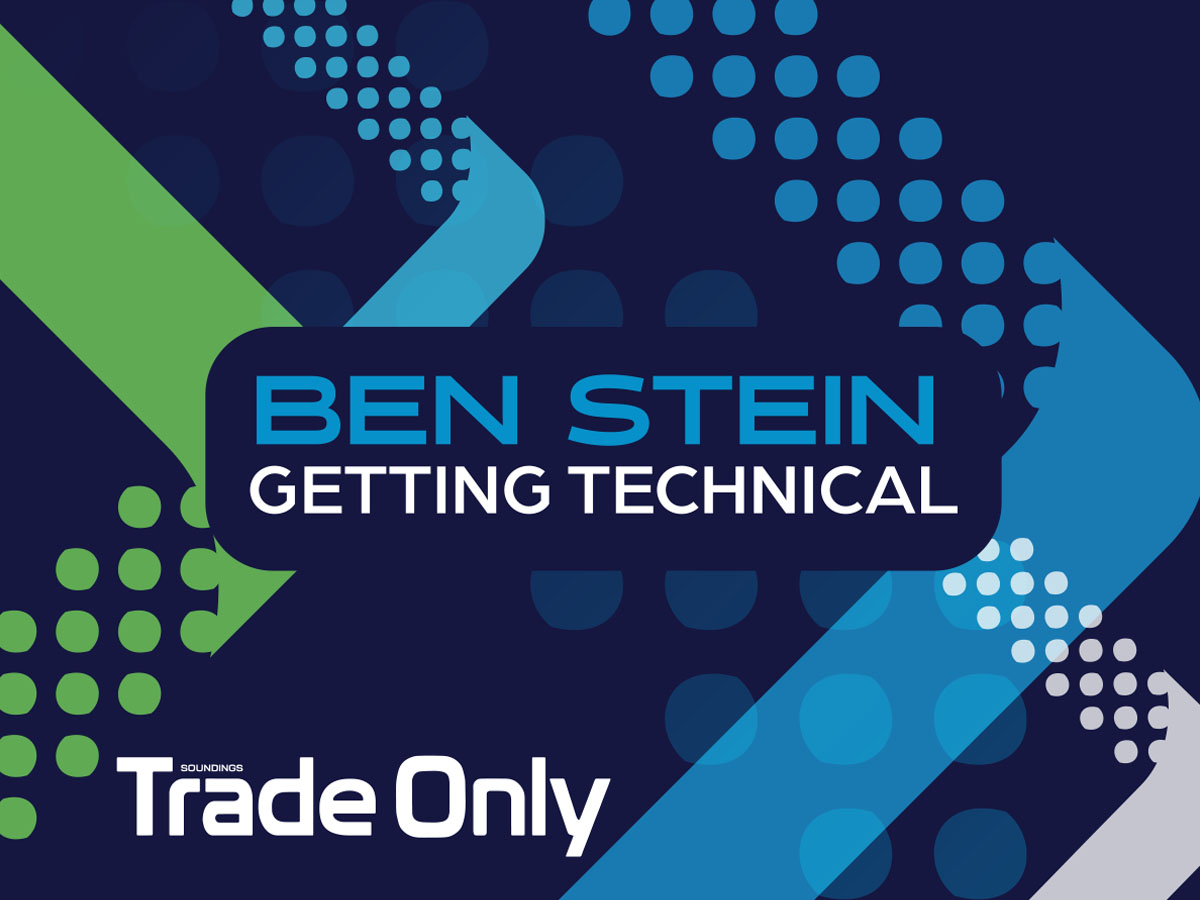
Editor’s Note: This column originally appeared in the May issue of Soundings Trade Only as part of my Getting Technical monthly column. covering all things technology. I welcome all feedback on these pieces. Feel free to let me know when you think I’m wrong. I welcome the feedback! Ben S.
Autonomous and AI capabilities are focusing not on total boat control, but on making operation safer
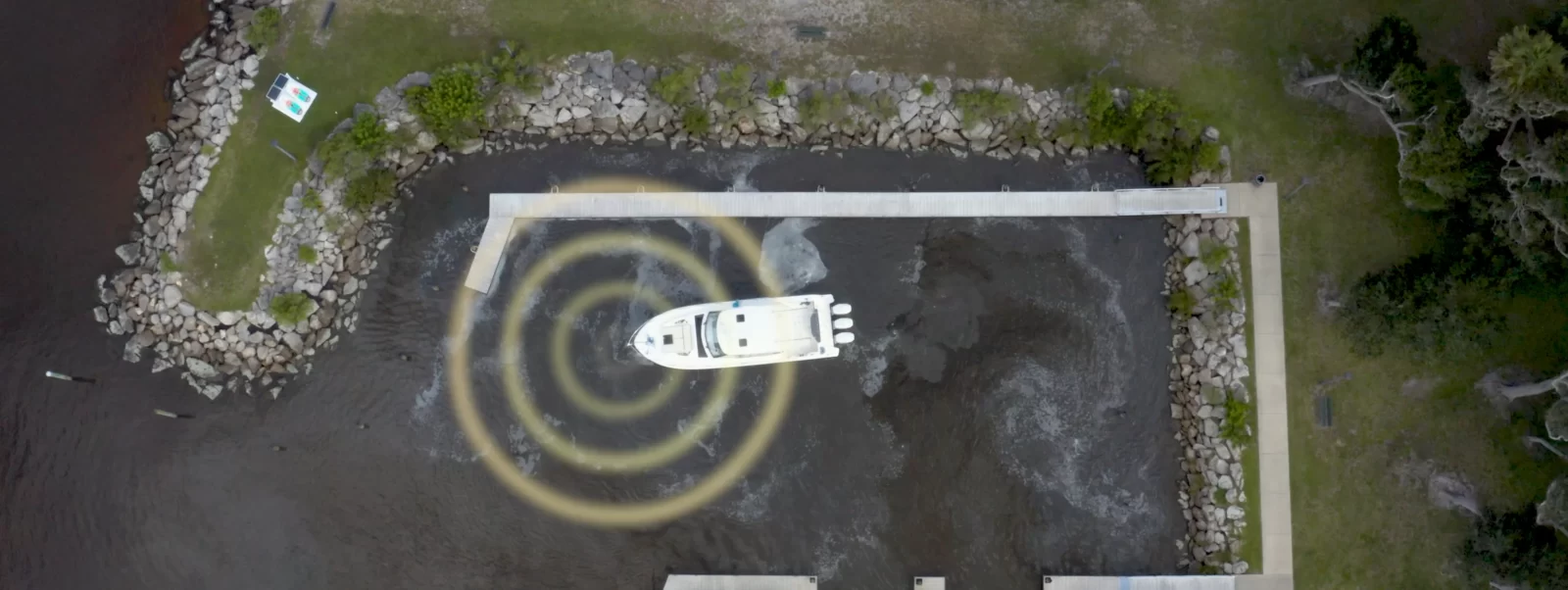
It has been more than five years since Raymarine and Mercury first demonstrated their docking-assistance technology. It’s also been almost two years since Avikus took a group of marine journalists out at the Fort Lauderdale boat show to show off its full autonomy capabilities. I was impressed with both systems’ capabilities, but I was also left with a lot of questions.
The answers to some of those questions might finally be coming into focus.
The demo that I attended for Raymarine and Mercury showed that their system, with its large, stereoscopic machine-vision cameras, could detect objects within a 3-foot perimeter of the boat. It could also maneuver the boat out of harm’s way. For a proof of concept, the system seemed quite polished, although the cameras were a little unsightly.
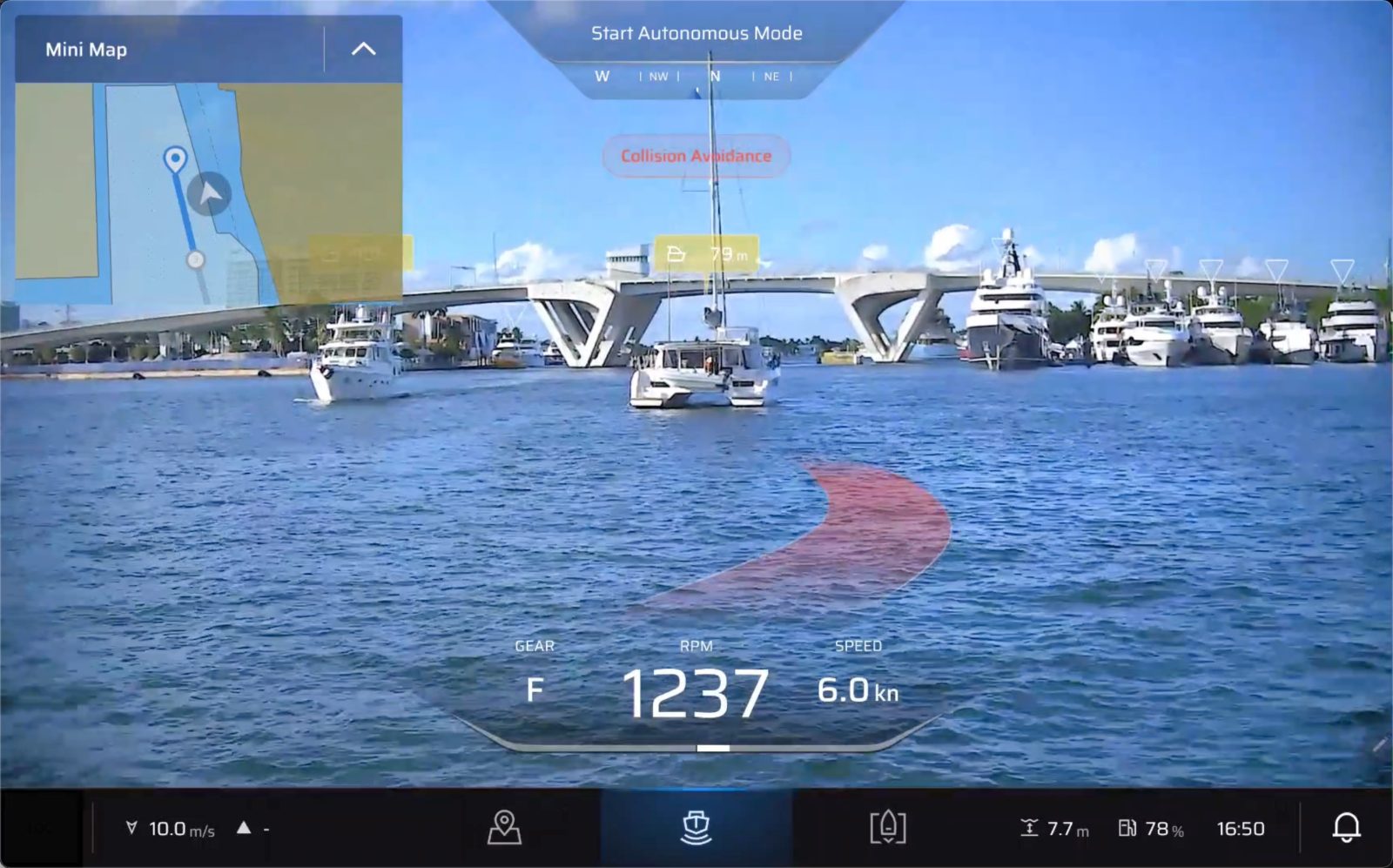
The Avikus demo shocked me. The company handed me a tablet, and we set out on the water near Port Everglades, Fla. The tablet mirrored the helm interface. It showed a live feed of everything around the boat, and the decisions the system made. Within seconds, the operator’s hands were off the controls. For the next 20-plus minutes, the system operated the boat in the busy Intracoastal Waterway.
Following these experiences, my two biggest questions were: Do boaters want their boats to operate autonomously, or is operating the boat an integral part of boating? And, can autonomous systems on boats advance to the point of being reliable to operate a boat safely in all weather and circumstances?
Every person I’ve asked in the trenches of recreational marine autonomy acknowledges that part of boating is operating the boat. Hence, an experience where the “operator” doesn’t actually operate the boat probably isn’t what the boating consumer is after. On the other hand, experts are quick to point out the many tools boaters have embraced to make boating easier. Technologies such as joystick maneuvering, dynamic positioning and autopilot are designed to reduce the operator’s workload and make boating less stressful.
Today, several companies have either begun shipping or are getting ready to ship working systems to customers. It should be no surprise that docking, low-speed maneuvering and situational awareness are the focus for early autonomous systems.
Both of the on-water demonstrations I attended preceded the November 2022 introduction of ChatGPT, and with it the trend toward using AI to describe computer-aided decision-making. However, every company in this space now describes its products as leveraging AI to assist boaters. Avikus, Brunswick, Lookout Marine and Tocaro Blue all offer, or will soon offer, AI and autonomous systems to reduce an operator’s workload and enhance situational awareness. Avikus and Brunswick aim to control propulsion systems directly, while Avikus, Lookout Marine and Tocaro Blue provide augmented views of the environment around the boat.
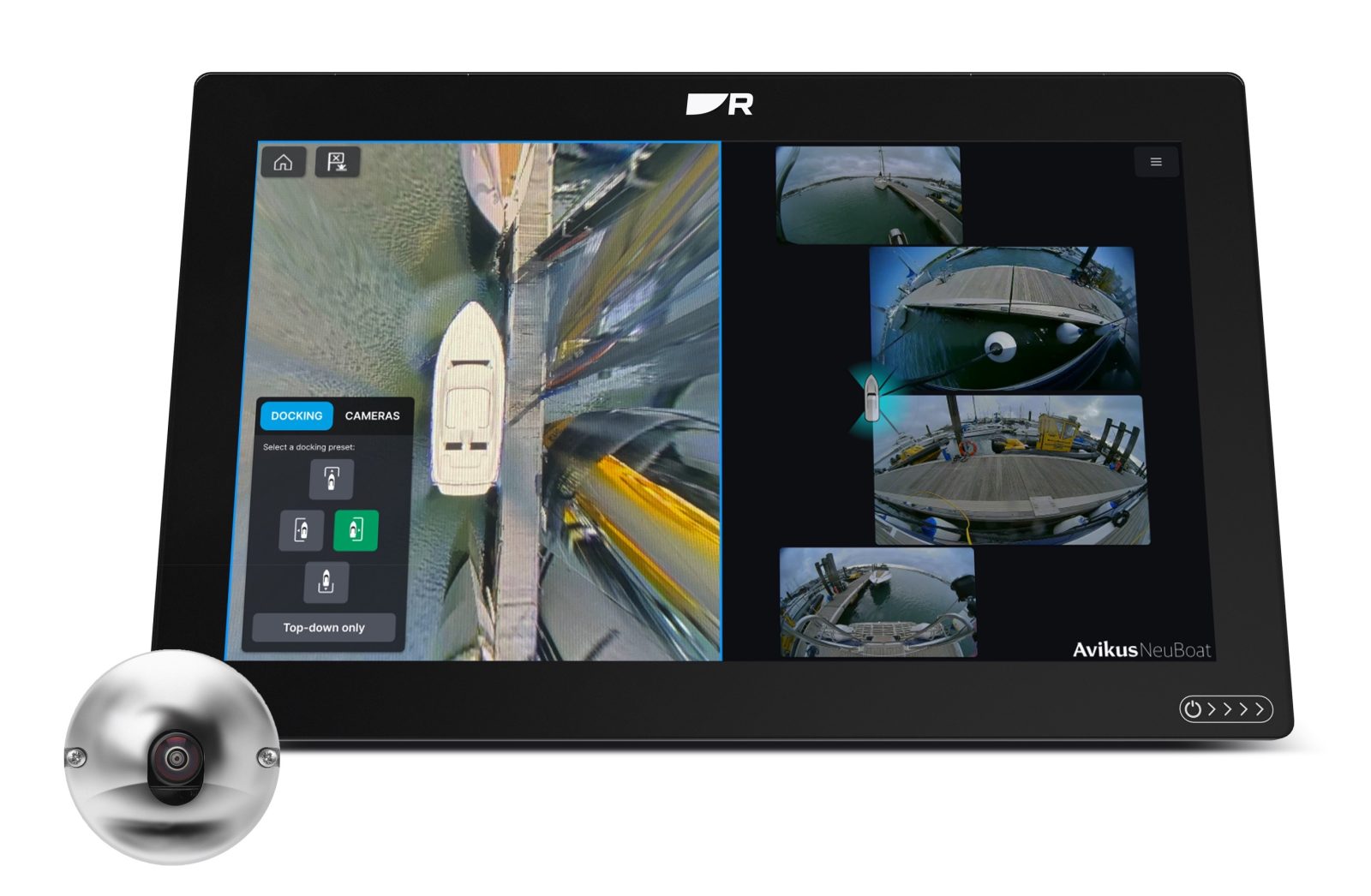
Avikus’ first system to ship, NeuBoat Dock, enhances situational awareness around the dock. Its features are similar to Garmin’s Surround View camera system. The system uses six cameras to provide a bird’s-eye view around the boat.
Avikus’ NeuBoat Navi offers forward-focused route planning and following tools. The system, which is expected to start shipping in 2025, provides visualizations of a route, collision warnings, speed suggestions and chart plotter functionality.
Both NeuBoat Dock and Navi should gain the ability to maneuver the boat when paired with NeuBoat Control upon its 2025 release. As of now, it is not clear which propulsion systems will be compatible with Avikus’ systems.

Brunswick’s ACES (autonomy/automation, connectivity, electrification and shared access) strategy has produced a Boston Whaler 405 with stereoscopic cameras nicely integrated into the boat, thus addressing the aesthetics issue from previous systems. Brandon Ferriman, Brunswick’s senior director of autonomy and ADAS programs, says Brunswick has also developed core components that can be packaged and adapted for various segments of the market, from pontoon boats to large yachts.
Brunswick and Volvo Penta share the advantage of unfettered access to propulsion control, owing to their manufacture of engines, engine controls and joystick maneuvering systems. However, Brunswick’s portfolio covers nearly every aspect of boatbuilding and, with its ownership of Freedom Boat Club, the operation of a large fleet. The latter gives Brunswick an opportunity to collect data and have a potential proving ground for autonomous systems. In theory, effective assistance technology could reduce the expense that Freedom Boat Club incurs when repairing damage from docking and other low-speed incidents.
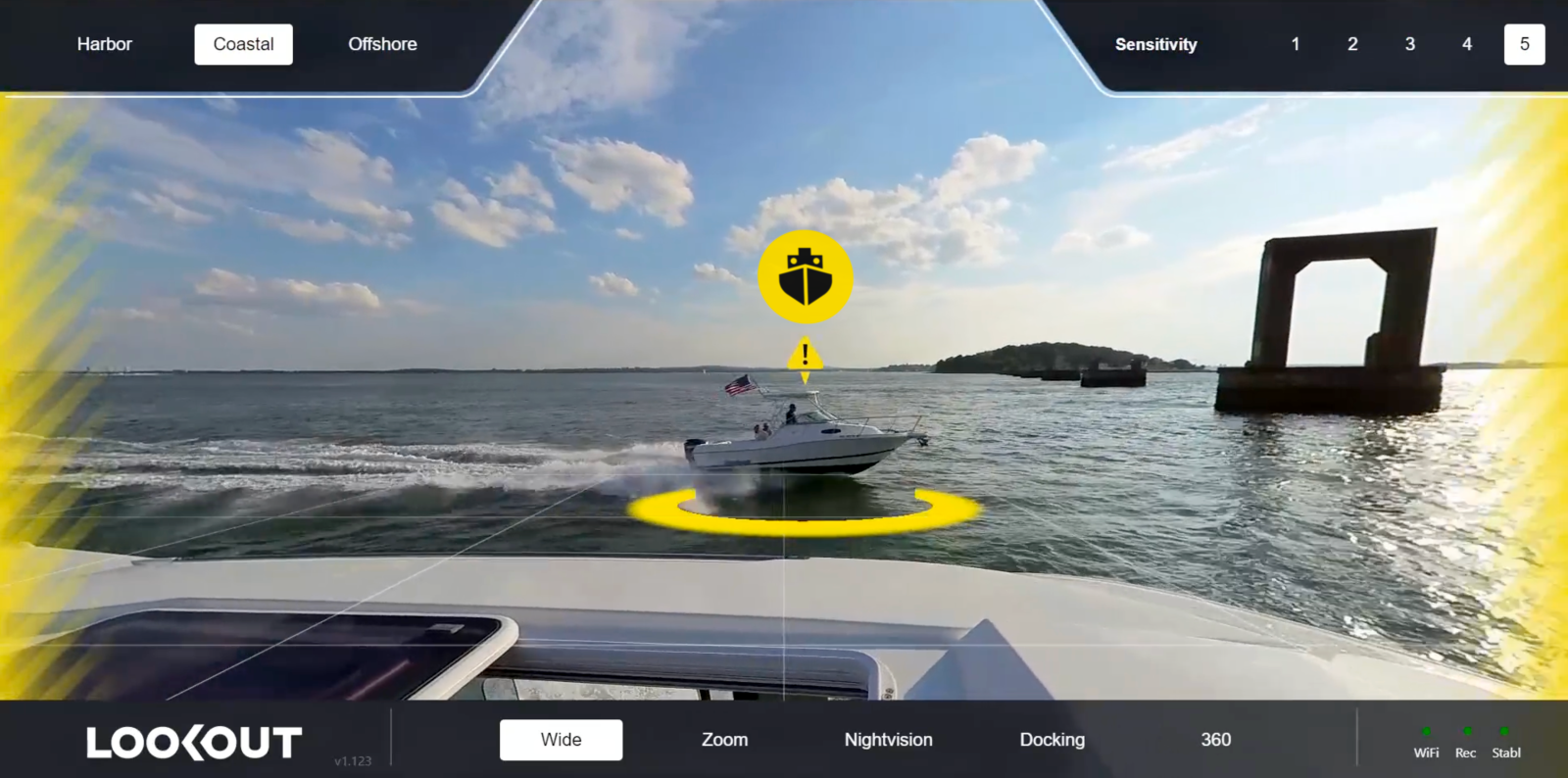
Lookout Marine’s AI vision system doesn’t aim to control the boat directly. Instead, the company plans to provide information at a glance, enhancing the operator’s awareness of the waters around him or her. By highlighting hazards, aids to navigation, other vessels and more, Lookout offers a 3D view of the water ahead of the boat, with clear highlighting of objects of interest.
The system combines a daylight camera, night-vision camera, AIS, chart data and cloud data into a single, 3D augmented reality view. The system’s output is displayed on chart plotters from major electronics manufacturers.
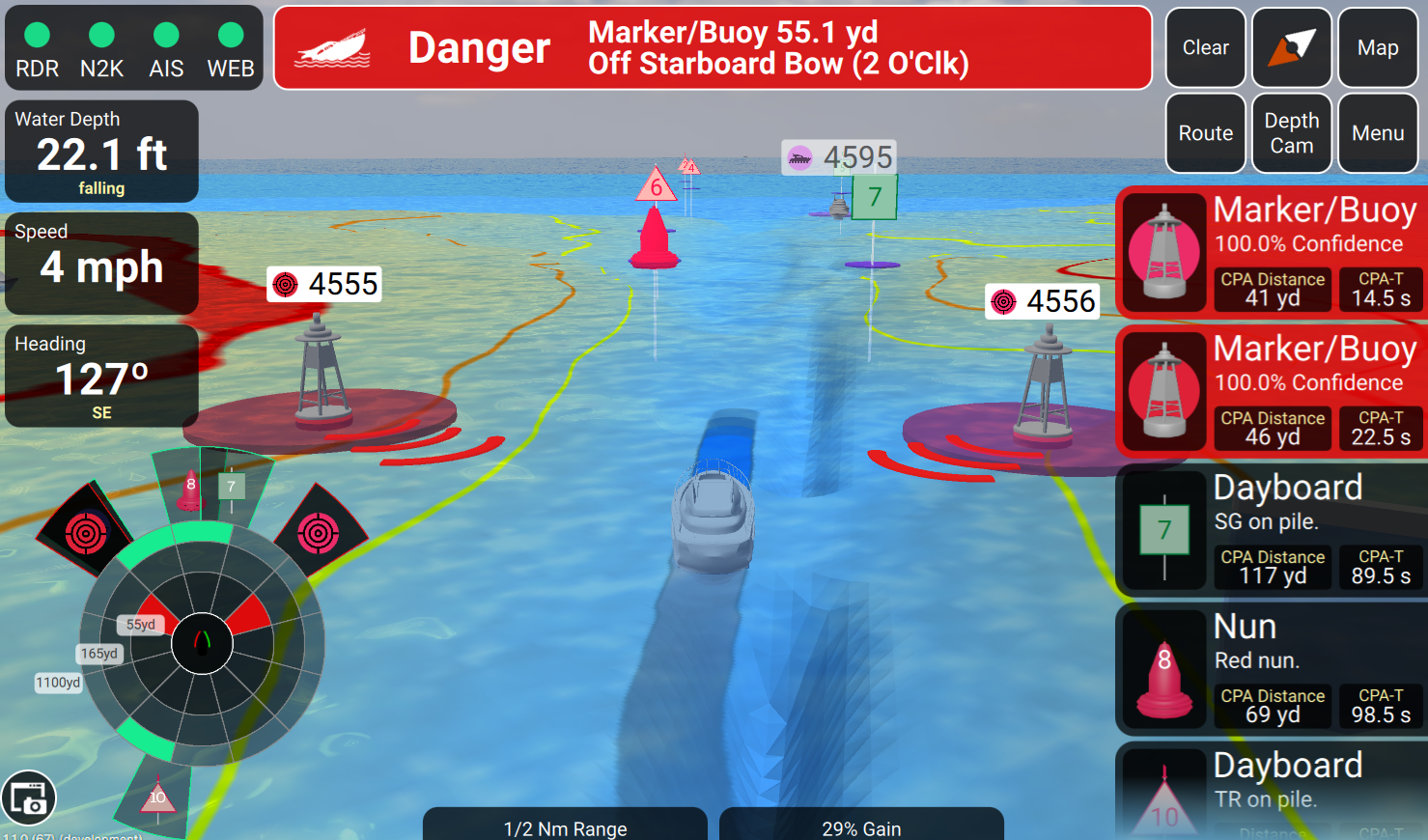
Tocaro Blue’s Proteus is similar in concept to Lookout but relies on radar and sonar rather than cameras. The result is a longer-range system that presents data via a 3D view more similar to a chart. By utilizing chart data and depth soundings, Tocaro Blue brings depth information to the visualization, and has the ability to warn about hazards underwater in addition to those above.
Tocaro Blue is the first company I’ve seen fully integrate radar into assistance technology. Nearly every company I’ve spoken with says radar is on their product roadmap, but none of the others have yet implemented it. Interpreting radar is a skill that many boaters haven’t mastered. Tocaro Blue says its algorithms and processor can tune radar and analyze the returns beyond the capabilities of most boaters.
Autonomy is a difficult technology to figure out, as we’ve seen with everything from cars to robotic vacuums. That level of difficulty, paired with questionable demand for full, hands-off automation, makes the future of autonomy on boats unclear. Still, the desire and need for technology to make boating safer and easier doesn’t seem to be in question


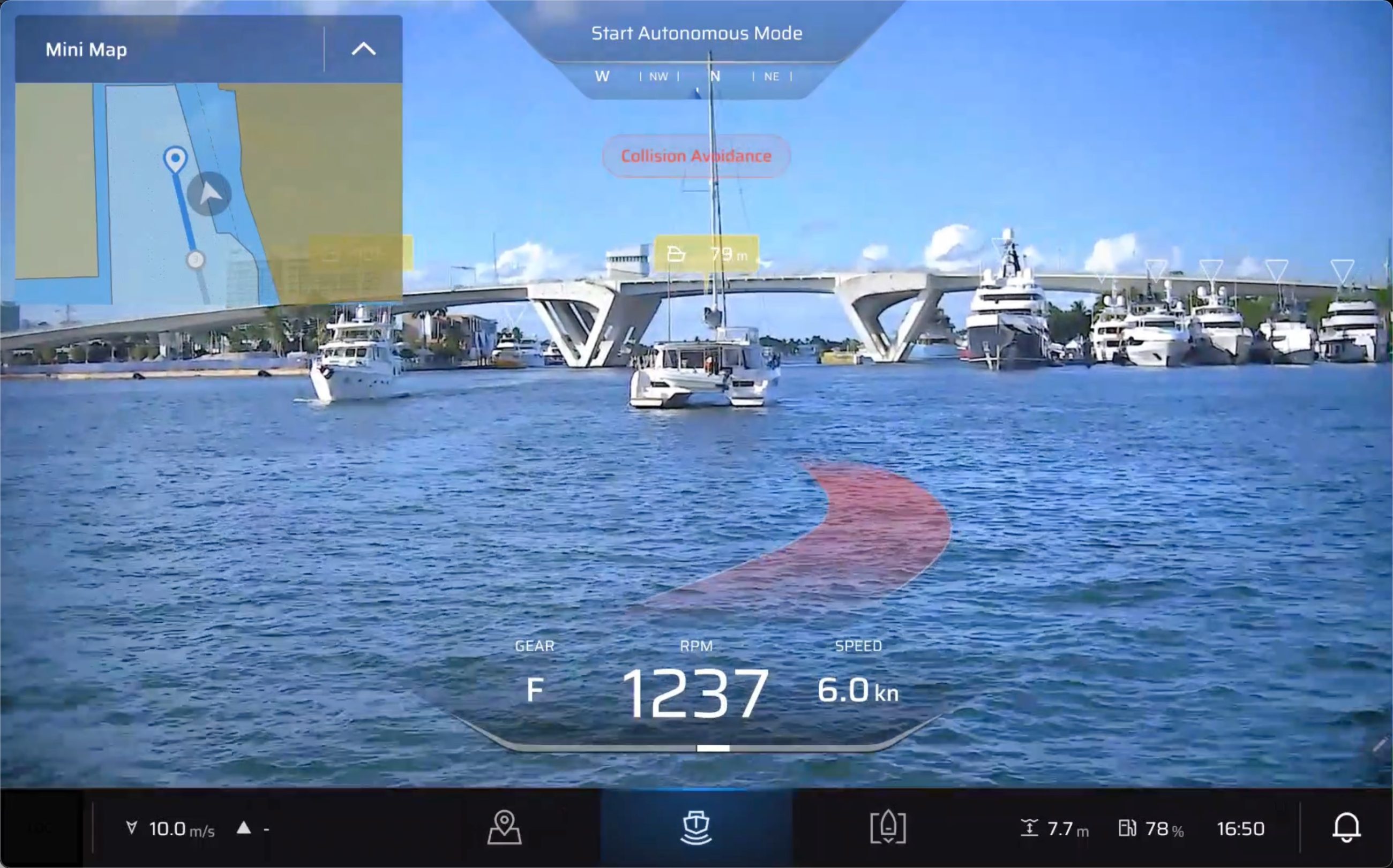
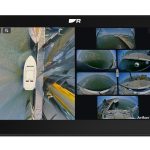
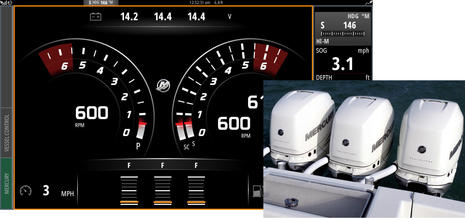









Interesting stuff, Ben! For the enroute portion of a voyage (where we would typically employ the autopilot now) these systems look very attractive. But for close-quarter maneuvering, I’m not so sure. Do these systems understand turbulent, changable current? Can they compensate for things like current and wind in a vessel without bow & stern thrusters (i.e., a single-screw sailboat)? These are the challenges that de-mark truly pro mariners from us plodders!
“The boat” is really an extension of my Self. Just like “the car” becomes an extension of the driver, or “The plane” is an extension of the pilot, and “the hammer” is an extension of the carpenter. Automation continues to make the tasks of being a boater easier. I am supportive of any technology that enhances the safety and lowers the risks associated with the activity, as long as the reliability attains a trustworthy state. Just as I would not trust a drunken bus driver, neither would I trust a buggy AI autopilot.
I think your last sentence resonates with a lot of boaters. I also believe that is a big part of why the first rounds of AI awareness products are awareness and not control. Until we see the technology demonstrate itself as trustworthy and accurate on the water in a vast range of real world scenarios, it will be very difficult to trust it.
-Ben S.
But when will it be trustworthy? Products like the B&G NAC-3 autopilot have been on the market for how many years, yet everyone I know who has one (including myself) knows they will go into standby mode at random times. Can one count on big companies to every really create technology that is trustworthy ‘enough’?
Happy Holidays to Ben, Ben, and all of you visiting Panbo